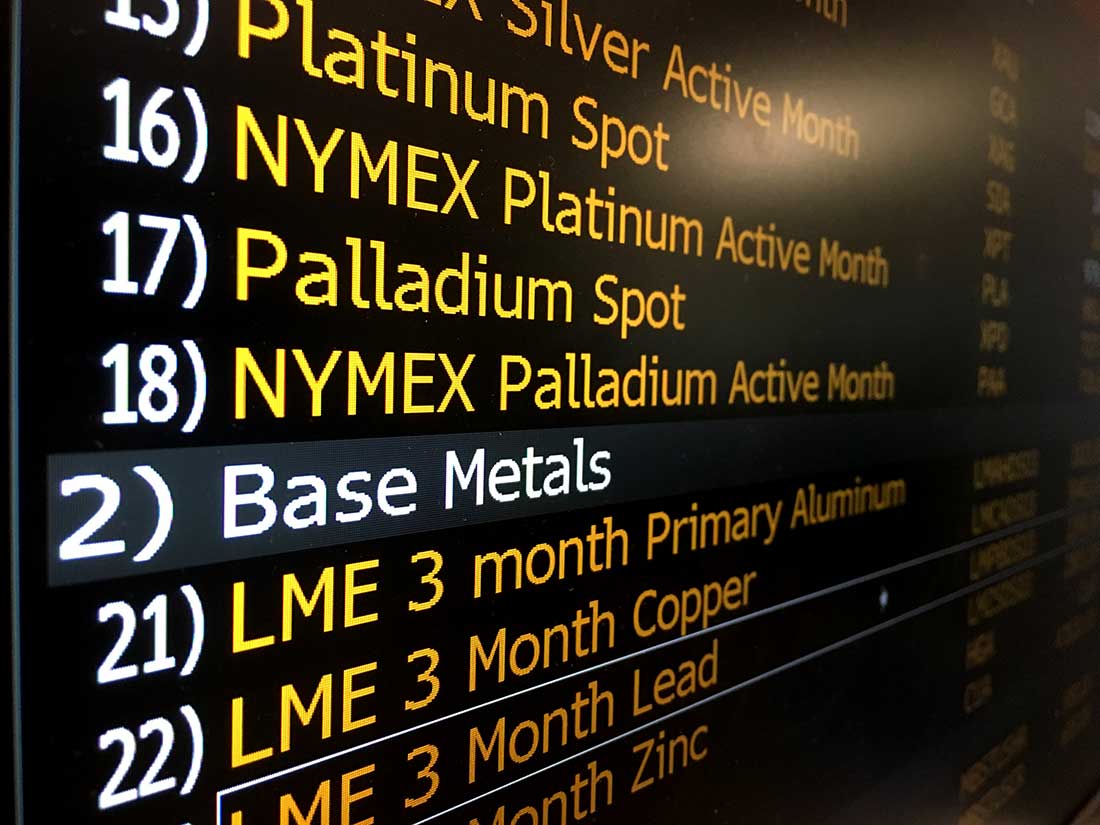By Jiefei Liu
Metals markets are rallying, due to expected economic growth and inflation pressure, and insiders expect the trend to keep going for some time.
The S&P GSCI Industrial Metals Index, a barometer for manufacturing, closed at 312.12 Wednesday, 32 percent higher than one year ago.
Copper for March delivery settled at $2.71 per pound Wednesday, up 0.15 cent on the COMEX of CME Group Inc.
President Donald Trump brings the prospect of U.S. economic growth “due to fiscal stimulus and spending on metals-intensive infrastructure” which push metals markets upward, said Caroline Bain, a commodity economist at Capital Economics Ltd., in an email.

Trump’s pro-business attitude boosts confidence in business, which is reflected in the market. If Trump carries out his promise to cut corporate taxes, said Patrick Sullivan, president of Great Lakes Trading Co., Inc., in an interview, “there will be more business activity,” increasing demand.
Although Trump’s pro-business stance helped boost the market, his protectionist policies could disrupt the metals markets. Bain explained that if the policy means lower demand for Chinese exports, prices may drop, since 50 percent of China’s exports to the U.S. are metals-intensive electronics products.
Although there is some degree of uncertainty about Trump, Sullivan said, he doesn’t think Trump is as anti-trade as portrayed because the markets would have reacted otherwise.
Apart from domestic influences, signs of recovery of China’s economic activity also contribute to the price rise, Bain said. China’s aluminum imports in December rose to 69,000 tonnes, the highest since December 2013, according to commodity research by Standard Chartered Bank Monday.
However, China’s economic prospects are considered dim by some analysts. Bain expects China’s economy to slow over the course of this year, which will be negative for prices.
“Prices could remain high for a few months, but we think that generally they will be lower by the end of this year as optimism about demand fades,” Bain said.
Not only base metals enjoyed the boon from expected industrial growth, but also palladium and platinum. These two precious metals have broader industrial usage than silver and gold, which are usually used as safe havens to avoid risks.
Gold prices have increased, though the rise is less strong than that of industrial metals.
Trump’s advocacy of infrastructure, and his attitude that the Fed should tighten its monetary policy, indicate a rising demand for gold to offset inflation pressures, Bain said.
The Organization of the Petroleum Exporting Countries’ decision in November to cut oil production increased oil prices, which added to inflation pressure and drove metal price increases, Sullivan said. The Consumer Price Index of the U.S. Bureau of Labor Statistics climbed 2.1 percent in December from a year earlier, rising above the Federal Open Market Committee’s 2 percent target.
However, the manufacturing industry doesn’t worry about the metals price increases. Stover Matthew, auto industry analyst at Susquehanna International Group LLP, said materials prices increases will first cut into auto companies’ profitability, because car prices are usually fixed and adjusted annually. He said If those costs keep rising, the companies will then consider to raise car prices to pass the pressure on to consumers, but if this happens, the metals prices must have been going up for four or five years.

